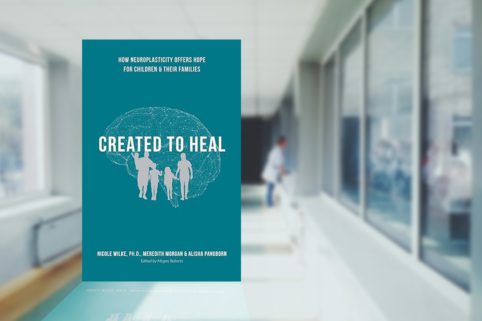Is Healing From Childhood Adversity Possible? A Review of the Book Created to Heal.
 BETHANY HERRON
BETHANY HERRON
Vice President of Education
Read more from Bethany
Listen to this article:
The Purpose of the Book
I grew up in poverty, made worse by my father’s addiction and my mother’s conviction she could never escape poverty’s grasp. The trauma it inflicted on me fostered nightmares into my early twenties.
Remarkably, in my mid-twenties they disappeared. I never knew why until I read Created to Heal: How Neuroplasticity Offers Hope for Children and Their Families. I learned about neuroplasticity, which is “the ability of the brain to change both physically and functionally, in response to the world around it.” (pg. 17)
Authors Nicole Wilke, Ph.D., Meredith Morgan, and Alisha Pangborn of Christian Alliance for Orphans (CAFO) explore how the brain works and how God creatively designed it to heal from trauma. Specifically, they demonstrate that since the brain does not finish maturing until age 25, the supportive environment provided by caregivers can rewire a child’s thinking.
Again, I know that firsthand. I married at 21 and after only a few years of living in a stable home with my amazing, protective husband, the nightmares went away. The Lord, in His grace, rewired my thinking.
There is hope for healing.
The Perspective
The Christian Alliance for Orphans (CAFO) is a Protestant coalition of churches, organizations, and individuals committed to supporting vulnerable children around the world. CAFO’s “Center on Applied Research for Vulnerable Children and Families” exists to take the guesswork out of orphan and foster care.
They explore everything from the impact of short-term mission trips on orphans to the improved outcomes family-based care provides them. Indeed, every project is developed to effectively care for children, even when it means changing long-held practices that have proven ineffective.
The driving force behind CAFO’s precise and effective practice is their commitment to model God’s heart for the vulnerable. They believe He has called His people to move past simple service and practice care that leads to real outcomes for children.
The Key Points
Written in response to the overwhelming, discouraging research in the orphan and vulnerable children space, the book emerges as a refreshing voice in the emerging field of neuroplasticity.
Two key points are:
God created the brain to heal
Every experience creates a neural pathway in the brain. Like a well-traveled trail, the more often the experience occurs, the easier it is to arrive at the pathway’s destination. That means positive experiences, such as strong family connections, increase the opportunity for a successful journey to healthy development. Negative experiences, such as material poverty or the death of a parent, create a trail towards delayed mental and emotional development.
The good news is, those trails are not set in stone. In fact, research shows that until age 25, God-centered relationships show great potential to create new pathways toward hope and healing. Which leads to the next point …
Caregiver relationships have amazing potential
Research shows caregiver relationships are the primary vehicle for healing. Ideally, this looks like support for existing relationships, such as the nuclear and extended family, which empower those closest to the child to provide a stable, supportive environment. When that’s not possible, it should involve supporting children with the most consistent, family-like situation possible, such as foster care.
Details We Love
There is so much about this book that aligns with True Charity principles — and we love that.
For instance:
It offers great hope
“Our brains were created to adapt, respond, and grow as a result of input, just like a tree formed by the wind. Lack due to poverty, a neglectful parent, the chaos of displacement, or exposure to violence can have a disastrous impact on the brain. Thankfully, the same mechanism – neuroplasticity – that allows our brains to grow abnormally also makes it possible for the children we love to heal.” pg 69
It supports the family unit
The authors encourage readers to support the family unit whenever possible. Developmental experiences such as Families Count and Embrace Grace provide the support needed to equip parents and young single mothers with the parenting skills needed to provide supportive environments to their children. Meanwhile, dignifying programs such as Christmas Markets provide a wonderful way for parents to be heroes within their home.
It encourages additional supportive relationships
The authors are clear God’s intention for the nuclear family is that it serve as the source for a child’s nurture, stability, and spiritual instruction. However, many children need additional outside support. For instance, Self-reliance Clubs equip children with the skills needed to leave poverty behind; and the Finally Home curriculum teaches survival skills to the caregivers of foster and adoptive families.
Considerations
The CAFO team does a fantastic commendable job of delivering important research in a digestible manner. However, while it includes reflective questions designed to enhance practical application, its lack of in-depth, specific examples may cause some readers to struggle with how to implement its concepts.
Who Should Read This?
Created to Heal: How Neuroplasticity Offers Hope for Children and Their Families is an encouraging read for anyone working with children and young adults. From churches providing skills classes for parents to ministries caring for young women aging out of foster care, this book offers insight into how God’s use of neuroplasticity offers hope for healing to adolescents who have experienced significant trauma.




